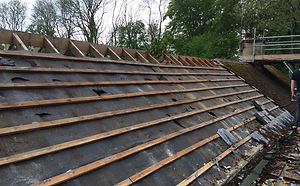CLERK OF WORKS
GENERAL CLERK OF WORKS

The need for a watching brief, or general clerk of works, is usually identified from initial survey work. A clerk of works is when an ecologist provides advice and supervises contractors during works that might result in a wildlife offence. The ecologist will provide guidance in line with an agreed mitigation plan. Some examples are provided below:
-
Supervision of scrub / vegetation clearance. An ecologist may check for nesting birds and common reptiles (excluding sand lizards and smooth snakes) during clearance works and advise contractors on an appropriate and considered working strategy, to reduce the likelihood of an offence being committed.
-
Fixing a water leak on a roof of a building known to support roosting bats. The ecologist will ensure contractors minimize disturbance to the bats and do not modify the bat roost by providing like-for-like access points (If any modification of the bat roost or disturbance of bats is likely, then a bat licence will be required (see below)).

LICENSED CLERK OF WORKS
A clerk of works is usually required as part of a protected species licence. An example is a licensed clerk of works for roosting bats, when the licensed ecologist may supervise works to buildings supporting a bat roost. The ecologist will supervise the hand removal of tiles, eaves, mortar and other features where bats could be roosting. The ecologist will also provide a toolbox talk to site contractors prior to works commencing, in accordance with the licence mitigation strategy. The bat ecologist will then move roosting bats by hand to temporary roosting facilities such as a bat box, or purpose-built permanent structures such as a 'bat house',